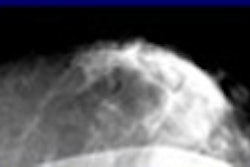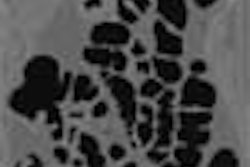Researchers from Johann Wolfgang Goethe-University in Frankfurt, Germany, have confirmed that heart rate dictates the optimal reconstruction technique in CT angiography.
Less than 70 beats per minute is best in all cases for retrospectively gated coronary CTA, but for hearts that march to a faster drummer, end systole and early diastole provide the best reconstruction intervals, the group determined with the aid of a 16-slice multidetector-row CT (MDCT) scanner.
Sixteen-slice CT scanning has "resolved the long-lasting trade-off between scanning volume and section thickness, and enabled the acquisition of large scanning volume datasets reconstructed into sections of submillimeter thickness. Unfortunately, CT cardiac image quality is determined less on the basis of spatial resolution than on the basis of temporal resolution," the authors wrote in Radiology (January 2006, Vol. 238, pp. 75-86).
Motion-free heart imaging requires at least 165-250 msec of cardiac akinesia, which is easily achieved at low heart rates by placing the construction interval in middiastole, a "long-lasting and rather tranquil" period, which distinctly diminishes at high heart rates "until it disappears completely."
The longest and quietest reconstruction interval for patients with high heart rates occurs in end systole and early diastole, reported Dr. Christopher Herzog, along with Maric Arning-Erb, Dr. Stefan Zangos, Dr. Kathrin Eichler, and colleagues.
Their study examined 70 consecutive patients (49 men and 21 women, mean age 59.1 ± 5.8 years [standard deviation], mean heart rate 70 bpm) who underwent multidetector CT angiography (CTA) on a 16-detector scanner (Sensation 16, Siemens Medical Solutions, Erlangen, Germany). Patients were scanned at their normal heart rate, and no beta blockers were used.
Comparisons between coronary angiography and CTA based on absolute timing and relative timing were performed separately, with reconstruction intervals compared for only the segments associated with the best image quality. For both modalities, image quality was graded on a scale of 1-4 separately within each dataset and for each of two readers.
The CTA acquisitions were performed at 120 kVp, 300 mAs, 420-msec gantry rotation speed, 16 x 0.75-mm collimation, and a dose index volume of 41.96 mGy, following injection of 90 mL of nonionic contrast medium (Imeron 400, Bracco, Milan, Italy) at 2.5 mL/sec using a bolus-triggering technique.
The use of retrospective electrocardiographic gating (ECG) (220-mm field-of-view, 1.0-mm effective section thickness, and 0.5-mm increment) enabled continuous image reconstruction from volume datasets from any phase of the cardiac cycle. The adaptive cardiac volume reconstruction algorithm included with the scanner's cardiac software package was used for reconstruction. At heart rates of 72 bpm, 210-msec temporal resolution was achieved.
In all, 2,800 datasets were reconstructed, and the strength of agreement between observers in the grading of reconstruction intervals based on relative timing was 0.71 (95% CI: 0.65, 0.77) and 0.94 (95% CI: 0.92, 0.95) for absolute timing, the authors wrote.
"Significantly (p < 0.001) better image quality was observed for image reconstruction based on absolute timing and in patients with lower heart rates," they noted, while the influence of heart rate on diagnostic accuracy was not significant.
"Irrespective of the reconstruction technique used, the best image quality was observed in patients with a low heart rate for middiastolic reconstruction intervals (starting points: 61% of R-R interval [range 40% to 75%] and 599.3 msec after R [range, 450-840 msec]) and in patients with high heart rate for end-systolic or early-diastolic intervals (starting points: 27.3% of the R-R interval [range 10% to 45%]) and 202.3 msec after R [range, 82-336 msec])," the group wrote.
At the same time, no significant correlation was observed between heart rate and the R-R starting points of the reconstruction intervals leading to the best image quality for either reconstruction technique (relative timing: r = 0.23, p = 0.79l; absolute timing: r = 0/31, p = 0.62).
For detecting coronary artery segments and stenoses greater than 50%, CTA was 86% sensitive and specific, and there was no significant decrease between relative and absolute timing (p = 99%) according to the authors. CTA was less sensitive than in other studies, they acknowledged, perhaps because stenoses seen on angiography but not CTA were deemed false negatives, while CTA evaluation alone was restricted to segments larger than 1.5 mm.
The data correlated well with the previous findings of Mao et al, who calculated optimal prospective trigger times for scans of 200-250 msec and found 60% to 65% of the R-R interval to be ideal for heart rates less than 60 bpm -- and 27% to 39% of the R-R interval better for heart rates over 60 bpm (Journal of Computer Assisted Tomography, March-April 2000, Vol. 24:2, pp. 253-258), according to the authors.
"Our findings have distinctly altered our image reconstruction strategy in CT coronary imaging," Herzog and colleagues wrote. "Each dataset initially is reconstructed at 61% and 27% of the R-R interval by one of the technologists. With this approach, most datasets can be assessed properly. In case of insufficient image quality, preview series -- which consist of 20 single-section reconstructions (0% to 95% R-R interval) and are performed at the level of those vessel sections that appear unsatisfactory -- are used to determine suitable reconstruction intervals."
"Although best image quality is always obtained in patients with a low heart rate, the choice of a suitable reconstruction interval may allow sufficient image quality in patients with a high heart rate," they concluded.
By Eric Barnes
AuntMinnie.com staff writer
January 2, 2006
Related Reading
Coronary CTA requires dedication, 64-slice minimum, November 30, 2005
64 CT slices beat 16 for stenosis and diagnosis of heart disease, November 27, 2005
Cardiac CT strategies cut dose, keep image quality, November 25, 2005
Motion-free heart images revealed with 256-slice CT, October 24, 2005
Copyright © 2006 AuntMinnie.com



















